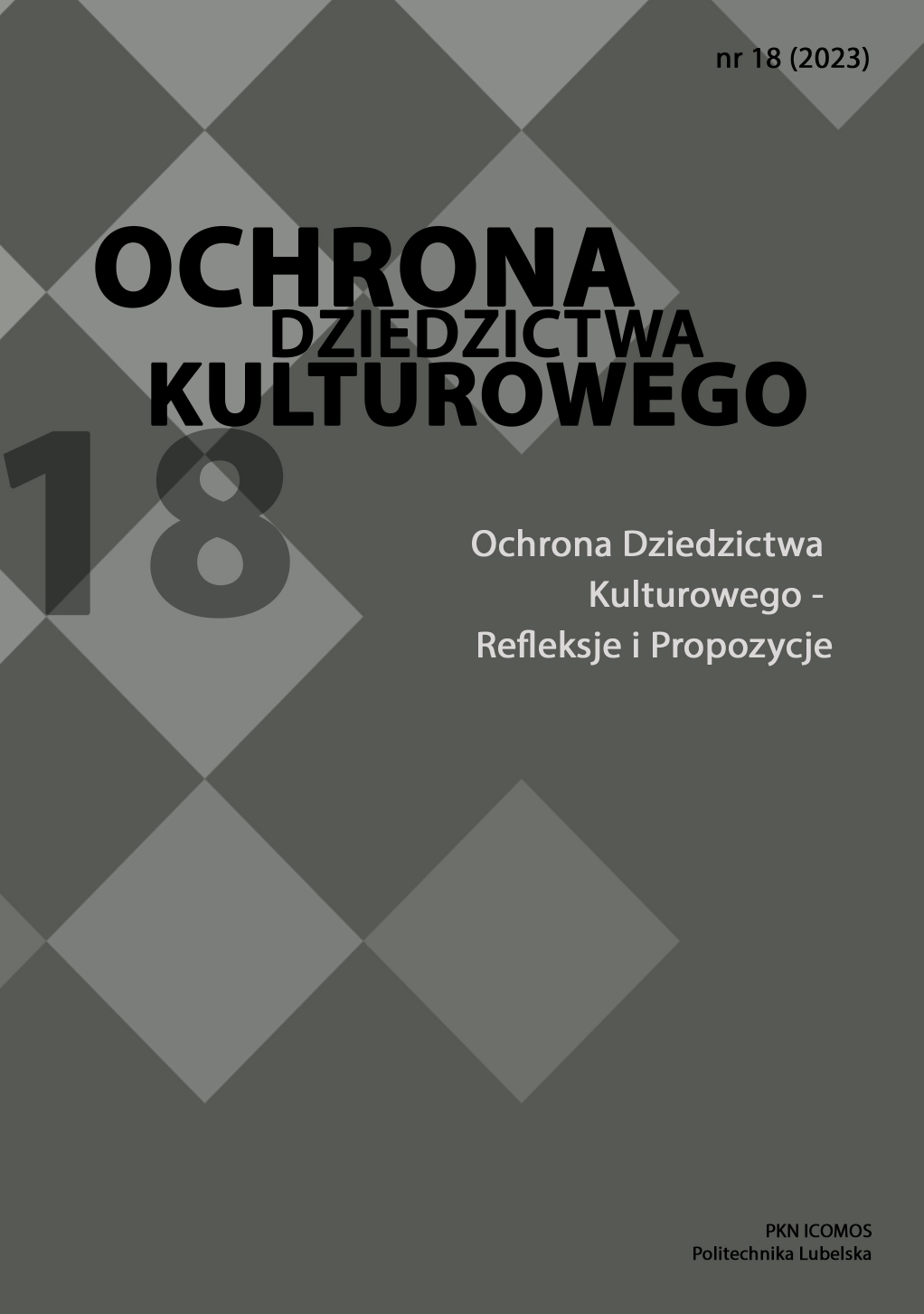Avrami, E., Mason, R., & de la Torre, M. (2000). Values and Heritage Conservation. The Getty Conservation Institute.
Barbi, V., Innovazione, F., & Fiu, U. (2021). Co-Designing the Accessibility : from Participatory Mapping to New Inclusive Itineraries Through the Cultural Heritage of Bologna. 3(2).
Benente, M., Minucciani, V., & Roccella, G. (2020). Accessibility to Cultural Heritage from the Urban System to Museums. Innovative Solutions. In Advances in Intelligent Systems and Computing: Vol. 1202 AISC. Springer International Publishing. https://doi.org/10.1007/978-3-030-51194-4_24
DOI: https://doi.org/10.1007/978-3-030-51194-4_24
de la Torre, M. (Ed.). (2002). Assessing the Values of Cultural Heritage. Getty Conservation Institute. http://hdl.handle.net/10020/gci_pubs/values_cultural_heritage
De Siqueira Duarte, C. R., Cohen, R., & Biocca, L. (2014). Universal design as an added value for heritage valorization: The cases of Brazil and Italy. Assistive Technology Research Series, 35, 317–326. https://doi.org/10.3233/978-1-61499-403-9-317
Devlieger, P., Rusch, F., & Pfeiffer, D. (2003). Rethinking disability: the emergence of new definitions, concepts and communities. Garant.
Eisazadeh, N., Heylighen, A., & Houbart, C. (2019). Learning from Disabled People about Qualities and Obstacles in Historic Cities; The Case of Liège. 6th Unesco UNITWIN Conference 2019: Value of Heritage for Tourism, Leuven 8-12 April 2019, 55–65.
Eisazadeh, N., Heylighen, A., & Houbart, C. (2021). Cité Miroir: Reflections on the Experience of Disabled Persons. Inheritable Resilience: Sharing Values of Global Modernities - 16th International Docomomo Conference Tokyo Japan 2020+1 Proceedings, 4, 1342–1347.
Gissen, D. (2019). Disability and preservation. Future Anterior, 16(1), iii–xiii. https://doi.org/10.5749/futuante.16.1.0iii
DOI: https://doi.org/10.5749/futuante.16.1.0iii
Heritage, A., & Copithorne, J. (2018). Sharing Conservation Decision. Current Issues and Future Strategies. In Iccrom. https://www.iccrom.org/sites/default/files/2018-05/sharing_conservation_decisions_2018_web.pdf
Heylighen, A. (2012). Challenging prevailing ways of understanding and designing space. Spatial Cognition for Architectural Design SCAD 2011 Symposium Proceedings, January 2012, 23–40.
Heylighen, A., Doren, C. Van, & Vermeersch, P. (2013). Enriching Our Understanding of Architecture through disability experience. Open House International, 38(1).
DOI: https://doi.org/10.1108/OHI-01-2013-B0002
Heylighen, A., Van der Linden, V., & Van Steenwinkel, I. (2017). Ten questions concerning inclusive design of the built environment. Building and Environment, 114, 507–517. https://doi.org/10.1016/j.buildenv.2016.12.008
DOI: https://doi.org/10.1016/j.buildenv.2016.12.008
Historic England. (2015a). Easy Access to Historic Buildings (Third). Historic England.
Historic England. (2015b). Easy Access to Historic Landscapes (Third). Historic England.
Kallio-Tavin, M. (2020). Disability studies as a site of knowledge in art education. International Journal of Education Through Art, 16(1), 3–11. https://doi.org/10.1386/eta_00013_2
DOI: https://doi.org/10.1386/eta_00013_2
Liebermann, W. K. (2019). Whose heritage? Architectural preservation and disabled access in Boston and San Francisco. Future Anterior, 16(1), 35–56. https://doi.org/10.5749/futuante.16.1.0035
DOI: https://doi.org/10.5749/futuante.16.1.0035
Mace, R.L., Hardie, G.J. & Place, J.P. (1991). Accessible Environments: Toward Universal Design. In: Design Intervention: Toward a More Humane Architecture, Prieser WE, Vischer JC and White ET (eds.), Van Nostrand Reinhold.
Martin, E. (1999). Improving Access to Heritage Buildings (R. Russell (Ed.)). The Australian Council of National Trusts and the Australian Heritage Commission.
Moser, I. (2006). Disability and the promises of technology: Technology, subjectivity and embodiment within an order of the normal. Information Communication and Society, 9(3), 373–395. https://doi.org/10.1080/13691180600751348
DOI: https://doi.org/10.1080/13691180600751348
Murphy, R.F. (1987). The Body Silent. Phoenix House.
Ostroff, E. (1997). Mining our Natural Resources: The User as Expert. Innovation, 16(1), 33–35.
Picone, R., Spinosa, A., & Vitagliano, G. (2011). Wide Accessibility and Conservation of Architectural Heritage in Italy : problems and methodological guidelines. Conservation/Transformation, 393–398.
Riegl, A. et al., (1984). Le culte moderne des monuments. Seuil
Smith, L. (2006). Uses of Heritage. Routledge.
DOI: https://doi.org/10.4324/9780203602263
Staszak, J.-F. (2008). Other/otherness. International Encyclopaedia of Human Geography.
DOI: https://doi.org/10.1016/B978-008044910-4.00980-9
The Department of Arts Heritage and the Gaeltacht. (2011). Access: Improving the Accessibility of Historic Buildings and Places (J. Donnelly (Ed.)). The Stationery Office.
The European Institute for Design and Disability EIDD, (2004). The EIDD Stockholm Declaration.
Tilmont, Michèle (ed.). ICOMOS France. (2013). Heritage and accessibility: How to make protected towns, monuments and sites in Europe barrier-free? / Patrimoines et accessibilité : comment rendre accessibles à tous, les villes, les monuments et les sites protégés en Europe ? (actes du colloque). Les Cahiers d'ICOMOS France, No. 27. ICOMOS France.
Tolia-kelly, D. P., Waterton, E., & Watson, S. (2017). Heritage, Affect and Emotion. Routledge.
DOI: https://doi.org/10.4324/9781315586656
Van de Bemdt, L. (2020). Built heritage meets Inclusive Design: Identifying challenges and strategies through a multiple case study enquiry. Leuven: KU Leuven. Faculteit Ingenieurswetenschappen.
Vermeersch, P., & Heylighen, A. (2015). Mobilizing disability experience to inform architectural practice: lessons learned from a field study. Journal of Research Practice, 11(2). https://doi.org/10.1109/Engineering4Society.2015.7177899
DOI: https://doi.org/10.1109/Engineering4Society.2015.7177899
Wells J. C., Stiefel B. L. (eds.), Human-Centered Built Environment Heritage Preservation: Theory and Evidence-Based Practice, Routledge, 2019.
DOI: https://doi.org/10.4324/9780429506352
Winter T., Clarifying the Critical in Critical Heritage Studies, [in:] International Journal of Heritage Studies, 19(6), 2013, pp. 532-545, https://doi.org/10.1080/13527258.2012.720997
DOI: https://doi.org/10.1080/13527258.2012.720997







